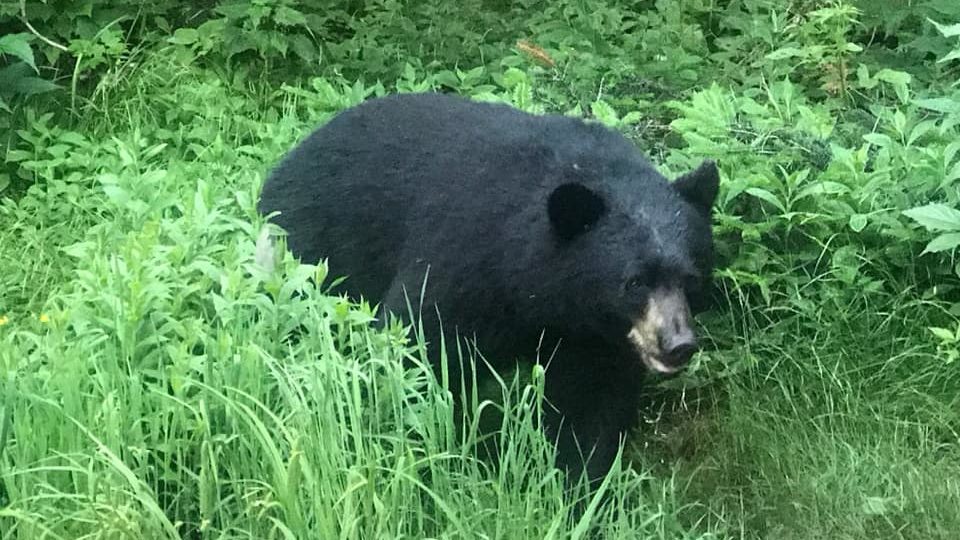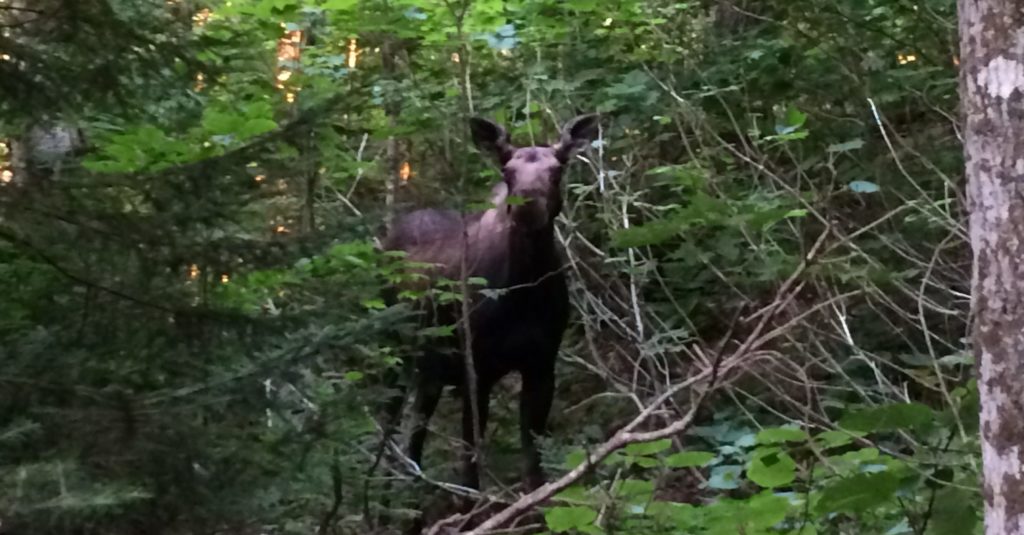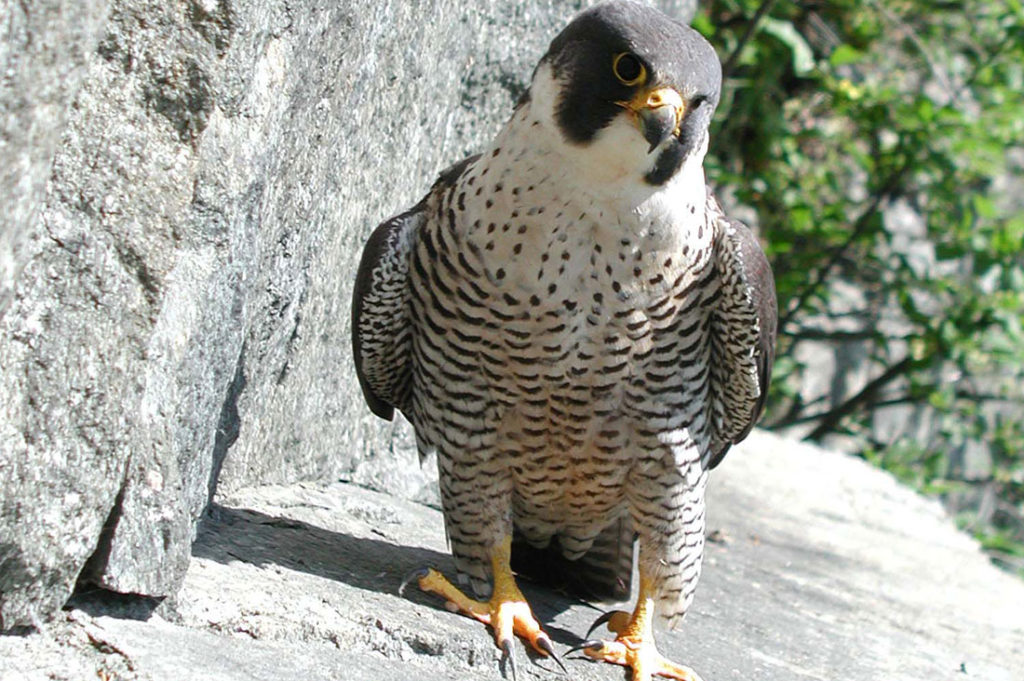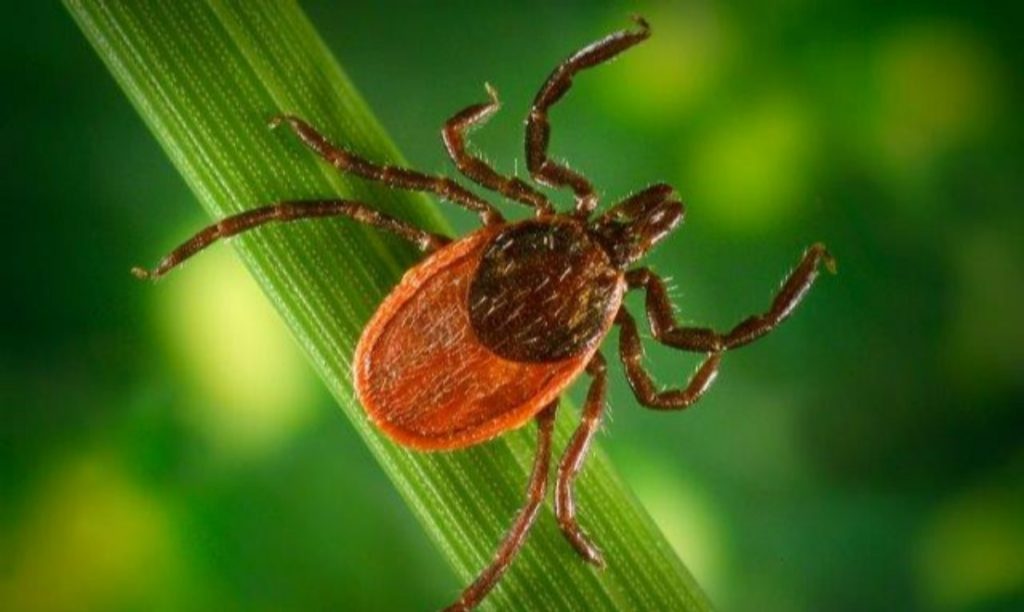Vermont’s forests cover 78 percent of the state — 4,591,281 acres. Nineteen percent of this acreage is public land, providing ample opportunities for trail users to encounter Vermont’s wildlife within the Green Mountain National Forest and forests and parks owned by the state and local municipalities. Trail users should be aware of these risks and recreate responsibly. Keep scrolling to learn more.
Black Bears

Black bears have become more active around the Long Trail System in the last few years. To avoid human-bear interactions and ensure the safety of both wildlife and trail users, the Forest Service mandates that hikers must use a bear box, bear canister, or properly hang all smellables and carry out all trash while in the Green Mountain National Forest (GMNF). The Long Trail and its side trails from Massachusetts to Route 17 (Appalachian Gap) are mostly on GMNF land.
GMC recommends using these food storage methods on the entire trail. Hikers should use a bear canister or bag approved by the Interagency Grizzly Bear Committee (IGBC). Don’t have a bear canister? Check out our lending program.
Bear boxes are located at overnight sites along the Long Trail and Appalachian Trail, and can be used as an alternative to a bear canister or food hang. Please store all food, garbage, and scented items in available boxes, and remove all items when you leave. Do not leave trash in the bear boxes. See the list of all Long Trail and Appalachian Trail shelters with bear boxes.
Food hangs should be used as a last resort; a hang must be 12′ from the ground, 6′ from the tree trunk and branches, and 200′ from campsites, water sources, and trails. Check out our how-to video here.
Please also follow these basic steps:
- Keep dogs leashed.
- Do not feed or approach bears.
- If you encounter a bear, make noise and back away slowly. Do not run.
- Pack out all garbage and food scraps. Do not leave these items in the privies, shelters, or fire pits.
- If primitive camping, prepare and store food at least 200′ from the campsite. If staying at a designated overnight site, follow these food storage do’s and don’ts. Use the bear box when available.
- Report any bear encounters to GMC and Vermont Fish & Wildlife.
- Learn more about bear safety while hiking and camping.
Moose

Moose tracks and droppings can be seen throughout the trail. And while these herbivores mainly snack on leaves and twigs, these giants can be extremely dangerous when irritated. They are particularly territorial during the fall mating season. Follow these safety tips:
- If you see a moose on the trail, do not approach it. Wait for the moose to move on before continuing.
- A moose’s eyesight is very bad. If a moose charges you, try to put a large tree between you and the moose, remove your pack, and make human noises.
- Find more safety tips here.
Peregrine Falcons

Peregrines have been making a strong comeback in Vermont. They nest in many locations on or near the Long Trail, such as Smugglers’ Notch and Mount Horrid. Falcons are easily disturbed by hikers above their cliffside nests. Hikers may encounter closed portions of the Long Trail or side trails during the nesting season, which runs from mid-March to mid-August. Please stay away from those areas until the young falcons have fledged.
Other Areas for Caution
Lyme Disease

Ticks and tick-borne illnesses are surging as warming climates allow ticks — such as the blacklegged tick which carries Lyme Disease — to expand their geographical range, stay active for a longer portion of the year, and increase population.
In Vermont, peak activity for blacklegged ticks typically occurs in May and June, but October and November are also hot for tick activity as ticks search for a host before winter. However, you can encounter blacklegged ticks year-round as long as temperatures are above freezing. Follow these safety tips to keep yourself, your loved ones, and your pets safe:
- Walk in the center of the trail to avoid high grass and leaf litter.
- Use insect repellent. Talk to a veterinarian about tick prevention for pets.
- Wear light-colored clothes.
- Check your body after being outdoors. Remove ticks promptly.
- Watch for symptoms of tickborne illness. Talk to your health provider if you develop symptoms.
- Visit the VT Department of Health page for more safety tips.
Related: more about Vermont’s bugs.
Rabies
Rabies is a deadly viral disease that infects mammals. It can be transmitted to humans and unvaccinated pets, so it’s important to take these precautions:
- Hang food, carry out food waste and trash, and refrain from feeding animals.
- Stay away from any wild animal that is acting strangely.
- Leave dead animals alone.
- If you are bitten, wash your wound well with soap and water and seek medical help immediately.
- Learn more from the VT Department of Health.
Want to learn more about Vermont’s wildlife? Curious hikers should check out GMC’s Nature Guide to Vermont’s Long Trail. It introduces readers to the Long Trail’s natural communities — or different neighborhoods where you can find common groupings of plants and animals. It then journeys the length of the trail to point out fascinating natural features, and wildlife encountered along the way.


















